Equipment For Wide Angle Underwater Photography
Wide angle photography can be shot with a compact or DSLR camera. In either instance, there are additional pieces of equipment that you will need beyond the camera itself to provide the ability to shoot at a wide angle of view. Regardless of the equipment you use, the principles and techniques for wide angle photography are universal.
Technically, a wide angle lens has a point of focus that is a short distance from its optical center, which creates a wide horizontal field of view. Wide angle lenses are available in various sizes, provide a deep depth of field, and some can actually cover an area wider than the human eye can see.
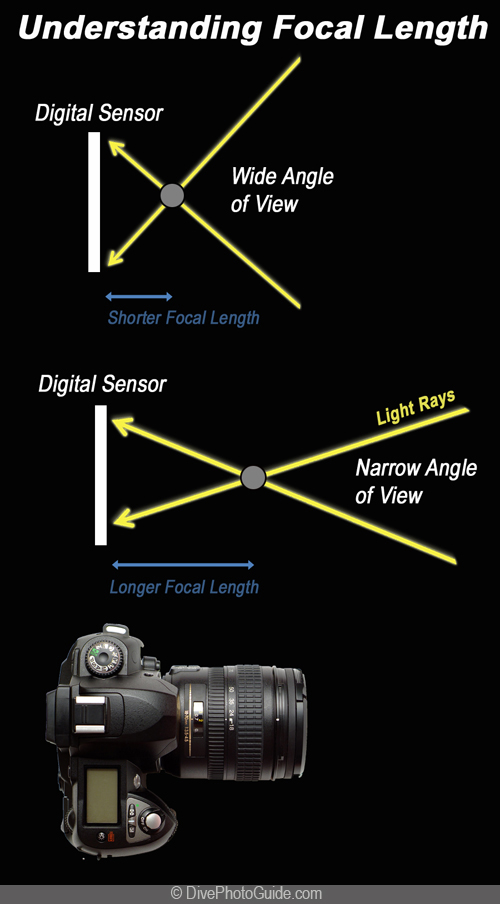
Shooting Wide Angle with a Compact Camera
If you’re shooting with a compact camera you have the option of switching back and forth from wide angle to macro while underwater by using “wet lens adaptors”, which are easily added to the outside of the housing’s lens port. A wide angle wet lens will increase the angle of view of the built-in lens on your camera. These wet lens adapters need to be compatible with your specific camera / housing model, and they are mounted with either a threaded (screw in) or bayonet (twist on) mount. If you are in the market for a new compact camera and housing, be sure to select one that takes a wide angle, or better yet, even a fisheye wet lens. For more on wet lenses, see the wet lens guide.
By default, the focus point in compact cameras is set to dead-center. In some compact camera models you can change the focus point in your menu, and you may want to experiment moving this focus point around so that you can focus on elements in the frame that are not dead center. Alternatively, you can lock focus on your subject by depressing the shutter halfway and then adjusting your shooting angle slightly to create a more pleasing composition.
Note: Compact camera users can skip the rest of the equipment section and go right to Lighting for Wide Angle. However, we recommend you do read the rest of this section because you will learn about some of the properties of light and optics underwater that will inevitably help you learn more.
Shooting Wide Angle With a DSLR
If you’re using a DSLR, you must select one lens to use before the dive, and it’s not swappable underwater. Your options are fisheye, fixed length, or limited zoom lenses. The Nikon 10.5mm or 16mm (depending on cropped or full frame sensor) or Canon 15mm fisheye lenses, and the Nikon 12-24mm, 17-35mm or Canon 10-22mm or 16-35mm zoom lenses have become the “working lenses” for underwater photographers. An interesting alternative is the unique Tokina 10-17 fisheye zoom, although there are many other options that are appropriate for underwater use – see our lens guide to understand the full range of options.
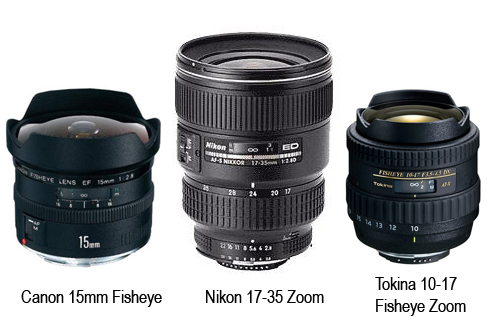
These ultra wide lenses not only give you the ability to get in close, but also allow for creativity and an expression of your personal style. Wide angle lenses create a form of distortion that can be taken advantage of. Elements that are closer to the lens will look larger than they really are in relation to elements that are further away from the lens. Fisheye lenses exhibit an extreme form of this characteristic and create distortion that is more noticeable as you move foreground subjects towards the edges of your frame. When shooting people, or objects with straight lines, avoid placing these elements near the edges of your frame because they tend to end up overly distorted.
Wide angle lenses also provide an increased depth of field. With fisheye lenses, at higher apertures your depth of field can actually extend from the minimum focus distance through infinity. When used properly, this extreme depth of field can help to add a 3D effect to you rimages.
Dome Ports
Shooting wide angle underwater requires the use of a dome port. This is a vital piece of equipment that acts as an additional optical element to your lens. Dome ports essentially compensate for three issues that would otherwise be present due to the properties of water and light, or more specifically light travelling through both water and air before entering your lens.
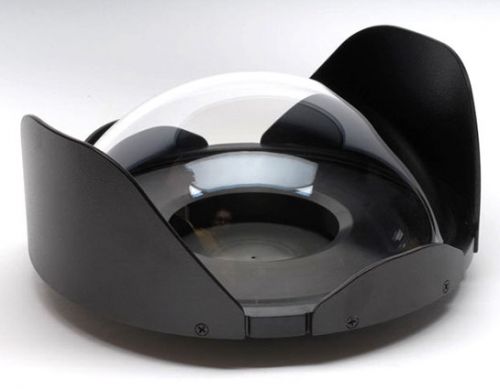
-
Refraction: As light passes from one medium of a particular density (water) to another (the air inside your dome port), it is bent (refracted). When light enters your port it is refracted by approximately 25%. Thus the focal length of your lens also increases by the same.

Effects of Refraction
-
Radial Distortion: If you tried to use a wide angle lens in a flat port, the effects of radial distortion would create a sweet spot of focus in the middle of the frame where the light hits both the port and lens at a perfect right angle, and the image would blur as you radiate outward from the center.

The Most Common Type of Radial Distortion Underwater (Barrel Distortion)
-
Chromatic Aberration: Think of your port as a prism. When it is hit by white light, the different colors that comprise the light are refracted unequally, creating chromatic aberrations from some of the frequencies overlapping with one another.
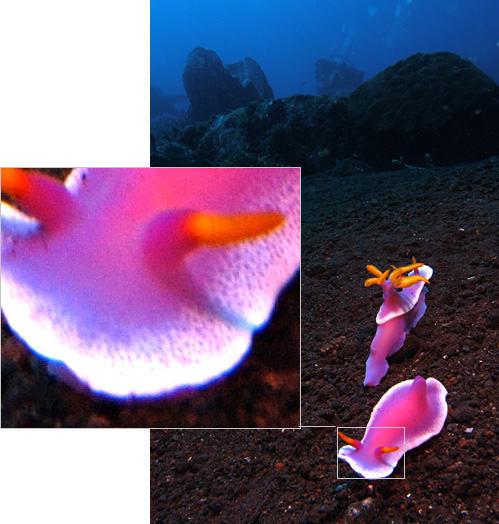
The curvature of a dome ports helps to minimize the effects of refraction, radial distortion and chromatic aberration.
Each manufacturer offers several dome ports and accessories, such as port extension rings and diopters, which align the curvature of the dome with the optical focal point in different lenses. Therefore, it is important to make sure that you are using the right dome port and accessories for each lens in order to produce tack sharp images from edge to edge.
Be sure to check with the manufacturer and/or ask your retailer about exactly which ports and accessories may be required for optimal underwater performance with any particular lens you are considering. Most housing brands offer port combinations for any of the lenses in our lens guide, which is limited to lenses that are recommended for underwater photography.
Virtual Image
Dome ports don’t focus on the actual subject, but rather a “virtual image” of the subject in front of the dome port itself. This is due to the concave curvature and optical properties of dome ports. The distance of the virtual image from the dome port can range from less than a foot to about 18 inches depending on the port.

What’s important to understand is that the virtual image is treated as the actual subject and your lens must be able to focus at this short working distance. This is the only thing that you need to worry about regarding the virtual image, otherwise the fact that a virtual image exists means very little. Some wide angle zoom lenses do not have the ability to focus at these short distances and therefore a close-up diopter (screwed onto the front of the lens) must be used in order to achieve sharp edge to edge focus on the virtual image.
Strobes
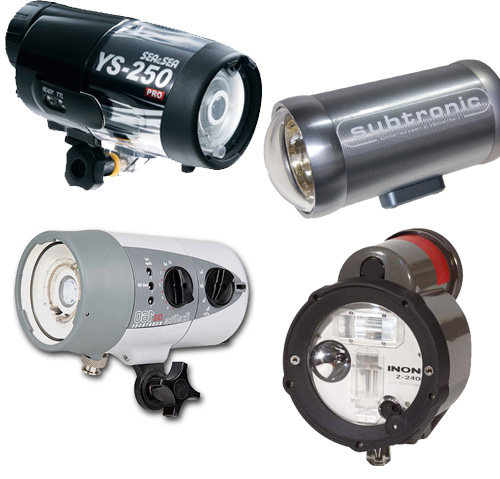
Although there are plenty of wide angle opportunities that can be shot using only available light, you would be limited in terms of what you can shoot. Strobes are only used to light the foreground subjects of your wide angle composition, but this ensures the inclusion of color and detail in your images. Wide angle photography requires stronger strobes with a wider angle of coverage than macro photography. You can shoot wide angle with one strobe, but ideally two strobes gives you more even coverage and increases the possibilities. Unlike cameras, strobes don’t get outdated every year or two, so an investment in the most powerful strobes within your budget range is always advisable. For more information on selecting strobes, visit the underwater lighting guide.
Continue to Lighting for Wide Angle Underwater Photography
RELATED CONTENT
Featured Photographer
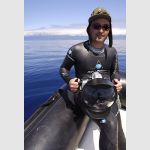
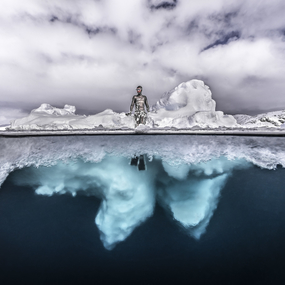
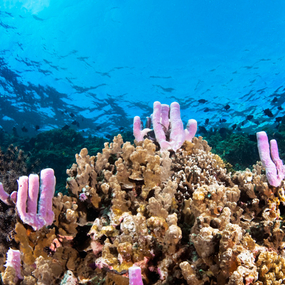
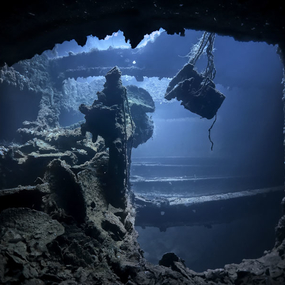

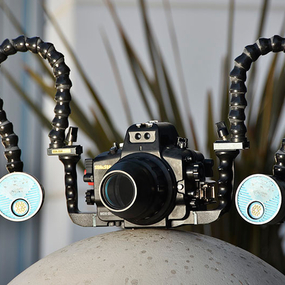
 Antarctica
Antarctica




